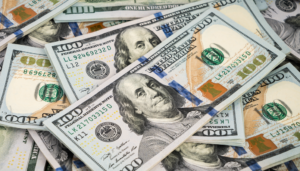
The Kenyan shilling has lost its value trading against the US dollar by nearly half in under 50 months – making consumers pay dearly for imported goods.
A number of commercial banks are already selling US dollars above the Sh150 mark in Nairobi, putting pressure on the Kenyan shilling while setting up consumers for a new wave of currency-driven price adjustments across imported products including cars, electronics and fertilizer.
A spot check on Monday afternoon showed the exchange rate to the dollar at I&M and Sidian Bank had breached the Sh150 mark as the country continued to grapple with a shortage of the foreign currency.
The average selling price for the dollar across 11 banks in Nairobi and several forex bureaus was clocking toward the Sh150 mark.
However, CBK placed the average exchange rate at Sh142.98, reflecting a huge variance between the official rate and the actual trading on the ground as quoted by forex dealers.
The dollar was trading between Sh146.7 for the other nine banks and Sh149.1 as the shilling continued to weaken despite policies that the government had put in place to arrest the freefall.
While Sidian Bank did not display forex prices on the exchange rate board, a cashier revealed that they were purchasing dollars at Sh134.9 and selling at Sh150.9.
This means that Sidian Bank raked in a net margin of Sh15.1, the widest spread among the 12 forex traders that we sampled.
Last year, foreign exchange income rose by at least 30 percent across the banks, with I&M leading followed by NCBA, on the back of a weakening shilling against the dollar.
President William Ruto in the past said the shilling would strengthen following the introduction of the government-to-government arrangement for oil imports aimed at providing a longer-term supply of fuel. But all that seemed to be nothing but hot air.